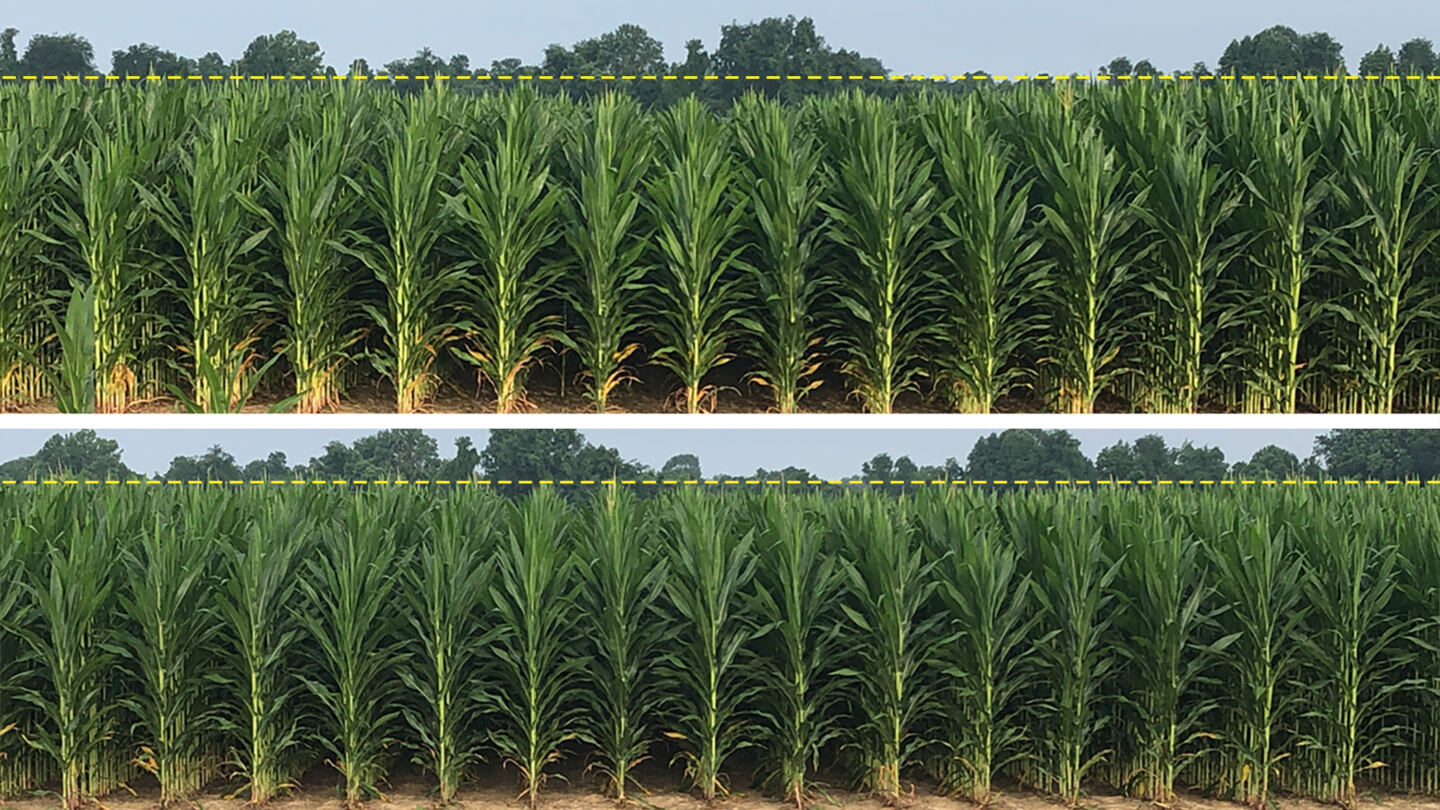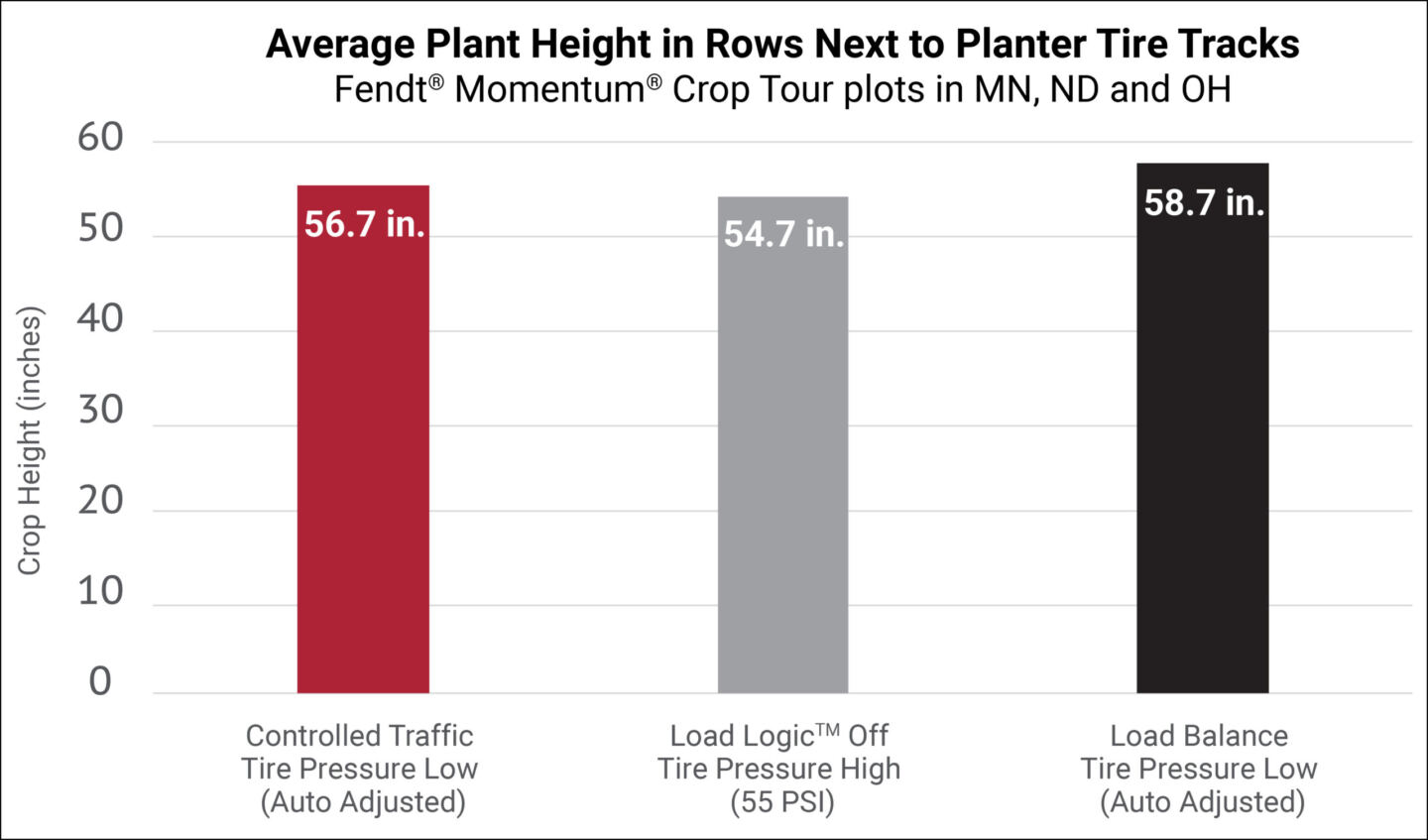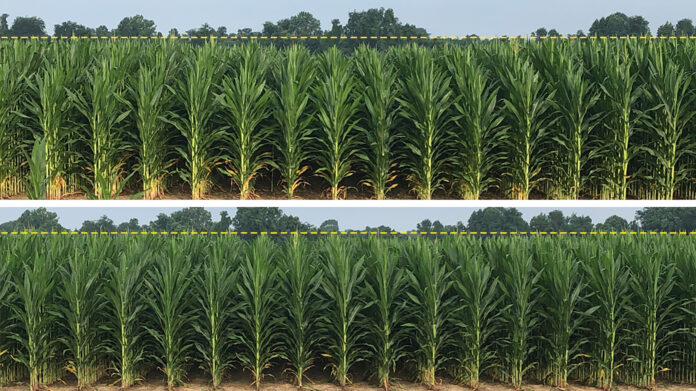Balancing weight evenly across planter can eliminate variability in cornrow height.
In this third 2020 Fendt Momentum Crop Tour field update, Agco Corporation agronomists report their observations of the effect of compaction on plant height.
Cornrows of uneven height can be a sign of compaction caused by planters. The weight of most high-capacity, central-fill planters is concentrated on the center transport wheels, causing excessive compaction on either side of the center wheel-track rows.
This compaction at planting, resulting in what is commonly referred to as pinch rows, restricts root growth on both sides of the row and reduces uptake of nutrients and water, often preventing plants from reaching their maximum height. Stunted plant growth above ground is often an indicator of what is occurring below ground, typically translating into yield reduction in the shorter rows, says Jason Lee, Agco agronomist, and farm solutions specialist.
Managing planter weight and compaction
In 2020, Agco Crop Tour plots were designed to compare how different levels of soil compaction at planting affect plant growth and corn yield. Lee and the Agco team planted three side-by-side plots in several states using the Fendt Momentum planter at one of three settings:
- Load balance. The planter’s optional Load Logic system automatically monitors and hydraulically transfers weight equally to all wheels, while also automatically adjusting inflation pressure in the wide, very high-flexion tires to the lowest manufacturer-recommended pounds per square inch (psi) for the weight of the planter at any moment during planting.
- Controlled traffic. The Load Logic system intentionally pulls the weight from the wings and concentrates it on the in-line tandem transport wheels, also with auto-adjusted low tire pressure. This setting is best for growers who strive to keep all field passes in precise traffic lanes to protect the rest of the field―and yield―from wheel-traffic soil compaction.
- Disabled. With the Load Logic system disabled, the planter operates much like other central-fill planters, with the weight concentrated in the middle of the planter and tire inflation pressures at a static 55 psi, a common road-transport pressure level.
Because the same tractor was used to plant all three plots in a given location, any differences noted between plots could be attributed solely to the different planter settings described above. Tractor tire pressures also were maintained at a low psi to minimize the soil compaction damage created by the tractor.
Compaction from the load on the center of the planter stunts plant height
In the Agco Crop Tour location near Chillicothe, Ohio, in particular, Lee says center rows were noticeably shorter in the plots planted when Load Logic was disabled (see the top half of photo) or operating with controlled traffic settings. The height of corn planted with the planter at Load Logic’s load balance setting, however, was even across all rows (bottom of photo). Based on previous research related to pinch-row compaction, Lee says he would expect to see even greater differences in plant height if the corn had been planted with a central-fill planter with dual transport wheels, as opposed to the Momentum planter, whose in-line tandem center transport wheels eliminate planter-induced pinch rows.
To record plant height differences in the plots, Agco agronomists measured the height of several plants in rows on both sides of the in-line tandem center transport wheel tracks in each of the three different plots. Figure 1 shows the average height differences due to compaction found in the Crop Tour plots in Pontiac, Illinois; Stewartville, Minnesota; and Casselton, North Dakota. When averaged across all three locations, corn in the center rows planted with equal weight on all planter wheels (Load Logic’s load balance setting) was, on average, 2 inches taller than center-row corn planted with Load Logic’s controlled traffic setting, and 4 inches taller than center-row corn planted with no weight management and with constantly high tire inflation pressure.

Check your fields for compaction
Lee says:
“Compaction severity is going to vary from year to year and from field to field. Depending on soil type, moisture conditions, tire inflation pressure, axle loads, and more.”
In addition to noting plant height variations between rows in fields,
“a good way to assess pinch row compaction in your fields is to do hand-yield checks in rows between center transport wheel tracks and in rows with no compaction effects (no tire tracks on either side),”
he says.
“Compare the yield differences in those two types of rows, then do that in multiple areas of the field to better assess if you are losing bushels to pinch-row compaction,”
Lee says. If you see losses, he recommends considering lower tire pressures, not planting into wet soil, and looking at technology changes to lessen soil compaction in the next season.

Source: AGCO

 Copyright 2020 All rights reserved.
Copyright 2020 All rights reserved.